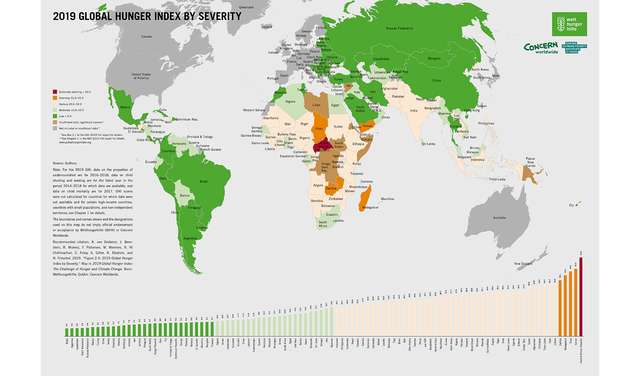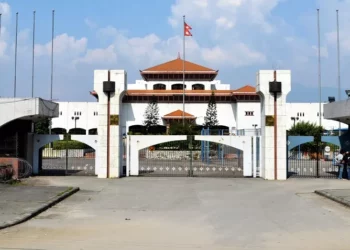WASHINGTON: Nepal was ranked 73 in the 2019 Global Hunger Index (GHI), much above its neighbour Pakistan (94), Bangladesh (88), Sri Lanka (66), India (102) and China (25).
Nepal has made significant advances in child nutrition, and their experiences are instructive.
Nepal’s remarkable reduction in child stunting from 56.6 percent in 2001 to 40.1 percent in 2011 is associated with, and likely attributable to, increased household assets (a proxy for household wealth), increased maternal education, improved sanitation, and implementation and use of health and nutrition programs, including antenatal and neonatal care (Headey and Hoddinott 2015).
The 2019 GHI measures hunger in 117 countries where the assessment is most relevant and where data on all four component indicators are available.
According to the report, 43 countries out of 117 countries have levels of hunger that remain serious, where, 4 countries Chad, Madagascar, Yemen, and Zambia suffer from hunger levels that are alarming and 1 country the Central African Republic from a level that is extremely alarming.
High-income countries are not included in the GHI but still show variable, non-negligible rates of food insecurity. The Food Insecurity Experience Scale—another measure of hunger not used in or directly comparable to the GHI—shows that in the European Union 18 percent of households with children under age 15 experience moderate or severe food insecurity. The essay this year focuses on the impact of climate change and hunger.
Human actions have created a world in which it is becoming ever more difficult to adequately and sustainably feed and nourish the human population. Ever-rising emissions have pushed average global temperatures to 1°C above pre-industrial levels.
Climate change is affecting the global food system in ways that increase the threats to those who currently already suffer from hunger and undernutrition.
There is a strong correlation between GHI scores and levels of vulnerability/readiness to climate change. Countries with high GHI scores are often also highly vulnerable to climate change but have the least capacity to adapt; several countries with low GHI scores are the least vulnerable and almost ready.
Climate change affects the quality and safety of food. It can lead to the production of toxins on crops and worsen the nutritional value of cultivated food – for example, it can reduce the concentrations of protein, zinc, and iron in crops. As a result, by 2050 an estimated additional 175 million people could be deficient in zinc and an additional 122 million people could experience protein deficiencies.









Comment